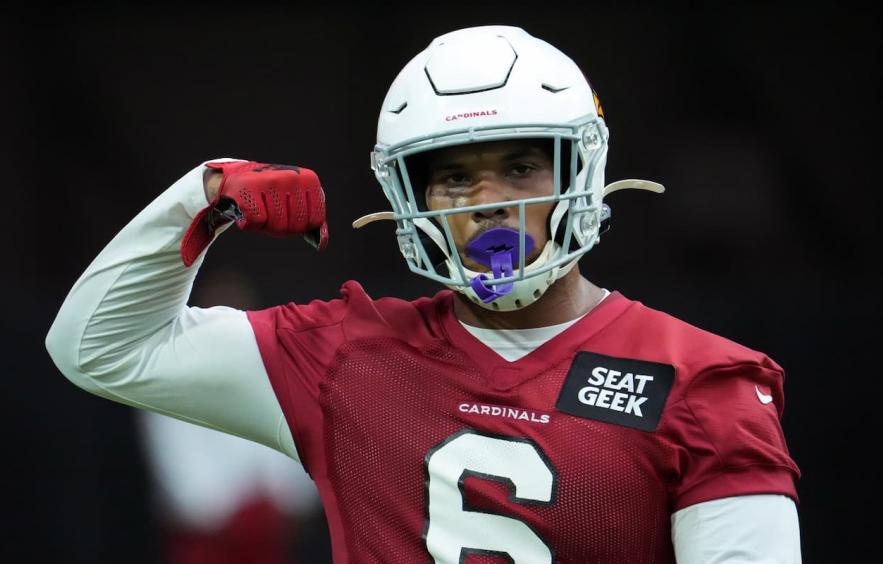How to Win the Flex Position in Your Fantasy Football League

Running backs and wide receivers should fly off the board early and often in leagues that deploy a flex position. Tight ends are usually not a great option for the position, so selecting additional running backs and wide receivers to help fill it is key. For those who do fill their quarterback and/or tight end positions early in drafts, it might put even more of an emphasis on factoring in matchups each week when determining who will be slotted in at the flex. Let’s dig into some historical data that should be factored into making weekly decisions.
Choosing a Flex in Standard Leagues
Standard leagues leave running backs with added value. In the 4for4 Top 200 Value Based Rankings, 11 of the top 20 ranked players are running backs. For some historical data, let’s take a look at the 4for4 Fantasy Points Browser. Among players who appeared in at least 10 games last season, 24 running backs averaged at least 10.0 fantasy points per game in standard scoring. By comparison, there were only 16 wide receivers who averaged at least 10.0 fantasy points per game. We saw a similar trend in 2022. That season, there were 23 running backs who averaged at least 10.0 fantasy points per game. There were only 12 wide receivers to average at least that many.
Let’s assume a fantasy league starts two running backs, two or three wide receivers, and one flex position each week. The pool of viable running backs is smaller than that of wide receivers because there are far more starting wide receivers in the league than running backs. Grabbing three running backs early can put you in a strong position at the flex spot, while also leaving you with plenty of options to fill out at wide receiver.
In terms of RB3s last year, running backs 25-34 all averaged at least 8.0 fantasy points per game last season. However, WR3s and WR4s start to catch up after that. There were 59 wide receivers who played at least 10 games and averaged at least 5.0 fantasy points per game last season. There were only 44 running backs that did the same.
Choosing a Flex in Half-PPR Leagues
The 4for4 Top 200 Value Based Rankings for half-PPR leagues continues to show the importance of running backs with 11 running backs ranked inside the top 20 overall. However, the further you move down the rankings shows the added value that wide receivers can bring.
Last year, 35 wide receivers appeared in at least 10 games and averaged a least 10.0 fantasy points per game in this format. By comparison, 30 running backs did the same. In terms of the flex spot, wide receivers were still very productive outside of the top 35 at the position. There were 63 wide receivers who averaged at least 6.0 fantasy points per game. Only 45 running backs did the same.
Similar results came to fruition in 2022. There were 49 running backs who played in at least 10 games and averaged at least 6.0 fantasy points per game. There were 67 wide receivers who reached that threshold. For those looking to fill their flex spots in this format, doing so with a wide receiver makes more sense.
Choosing a Flex in PPR Leagues
Things shift further in favor of wide receivers in this format. The 4for4 Top 200 Value Based on Rankings has nine running backs and nine wide receivers ranked inside the top 20. There were 18 wide receivers who averaged at least 15.0 fantasy points per game in this format last year, compared to 14 running backs. There was a total of 45 running backs who averaged at least 7.0 fantasy points per game. There were 66 wide receivers who averaged at least that many.
Two seasons ago, a whopping 74 wide receivers appeared in at least 10 games and averaged at least 7.0 fantasy points per game in this format. Only 48 running backs did the same. RB3s averaged in a range from 11.9 to 9.4 fantasy points per game. WR3s averaged in a range from 13.0 to 10.9 fantasy points per game.
Bottom Line
- Running backs are the way to go when choosing a player to fill a flex spot in standard scoring. It’s worth drafting more running backs early to try and fill the position. For those who don’t load up on running backs early, the scoring difference between running backs and wide receivers narrows the further we fall down the rankings.
- Wide receivers gain more value in half-PPR leagues and a case can be made for rolling with a wide receiver who starts for his team, rather than a player in the RB3 range. Once full-PPR scoring comes into play, WR3s and WR4s have the potential for significantly more upside than RB3s and RB4s.
- In addition to league scoring format, matchups should be heavily taken into consideration when determining your weekly flex option. If your third running back has a significantly more favorable matchup than your third or fourth wide receiver, then they should go into your flex spot, even if it is half-PPR of full-PPR scoring.





















